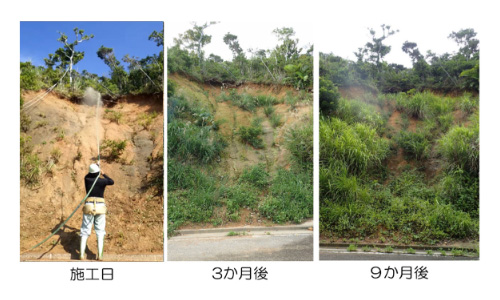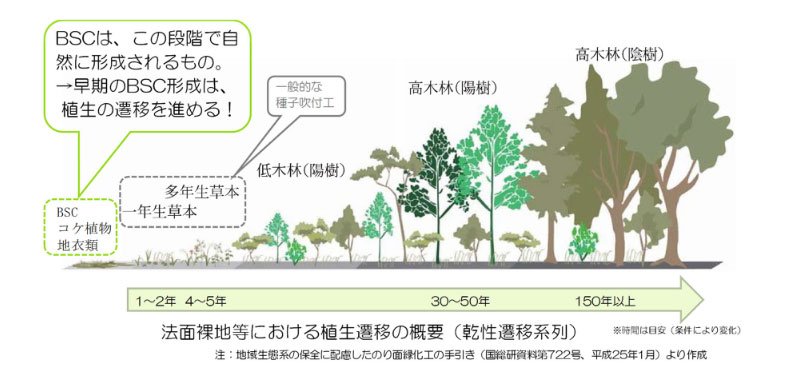Surface Erosion Prevention Method Utilizing Soil Algae (BSC (*1) method)
Nippon Koei Co., Ltd.
| Updated | December 25, 2023 (Posted on December 27, 2023) |
|---|---|
| Publication date | May 31, 2023 |
| Sector | Natural Disasters and Coastal Areas / Natural Ecosystems |
Company Overview

Founded in 1946, Nippon Koei Co., Ltd. is a consulting and engineering firm. As its basic sustainability policy, the company states that it will "strive to create a richer social environment in harmony with the natural and living environments, emphasizing the need to respond to climate change, to make a transition to a resource-recycling society, and biodiversity.”
Climate Change Impacts
In the southwestern islands, heavy rainfall causes soil runoff from development sites and agricultural land, which destroys the coral reef ecosystem in coastal waters and adversely affects the fishing and tourism industries. This is called the "red soil problem”. As a result of climate change, it is expected that similar problems will spread as the risk of slope collapse or muddy water generation due to soil erosion increases in various regions due to various factors including increased rainfall intensity.
Adaptation Initiatives
In collaboration with the National Research and Development Agency Public Works Research Institute, we developed the "BSC Method," a technology utilizing soil algae (*2). The purpose and method of this technology are as follows.
- Objective: Preventing the erosion of collapsed slopes and built-up slopes (nori-men) (*3) and formation of natural vegetation
- Method: Materialize soil algae and spread them on the ground surface of the collapsed areas and slopes (Figs. 1 and 2)
- Technical background: Research on red soil control conducted in Okinawa has demonstrated that the amount of sediment runoff is low in areas where soil algae have developed and that the amount of runoff is reduced by 1/10 to 1/20 in fields where BSCs have been formed.
- Advantages: Lower cost than conventional natural greening methods, applicability to regulated areas of environment preservation, and construction without slope shaping.
The "BSC method" uses soil algae that exist throughout the world, so it has the advantage of having little environmental impact on native species. Since soil algae are clonally propagated, there is no risk of genetic disruption, making the BSC method applicable in various domestic and international regions. This method is being promoted in countries outside of Japan including Nepal and Malaysia.
Effects / Expected Benefits
Vegetation generally transitions from bare soil to the state where the soil surface is covered with algae and moss (BSC), but this transition takes time under natural conditions. In this method, where soil algae are applied, BSCs are formed in a short period of time, from two weeks to one month (Fig. 3). BSCs have the effect of preventing surface erosion, and early formation will lead to erosion control, turbidity control, and vegetation restoration/introduction by taking advantage of natural phenomena.



脚注
(*1) BSC stands for biological soil crust, a sheet-like colony of soil micro-organisms formed by filamentous fungi, soil algae and mosses that entangle soil particles and clods on the ground surface.
(*2) Patented in Japan as a method for preventing soil erosion.
Patent No. 3718203 and No. 4412628 (National Institute of Public Works Research/ Nippon Koei Co., Ltd.)
(*3) Slopes created by embankment or cut during road construction and residential land development works.
- Nippon Koei Co., Ltd.
- Nippon Koei Co., Ltd. "Environmentally-Friendly Surface Erosion Prevention Technology Using Soil Algae"(only available in Japanese)
- Ministry of Economy, Trade and Industry, "Case Studies of Adaptation Good Practices by Japanese Companies in Developing Countries, February 2022"(only available in Japanese)

